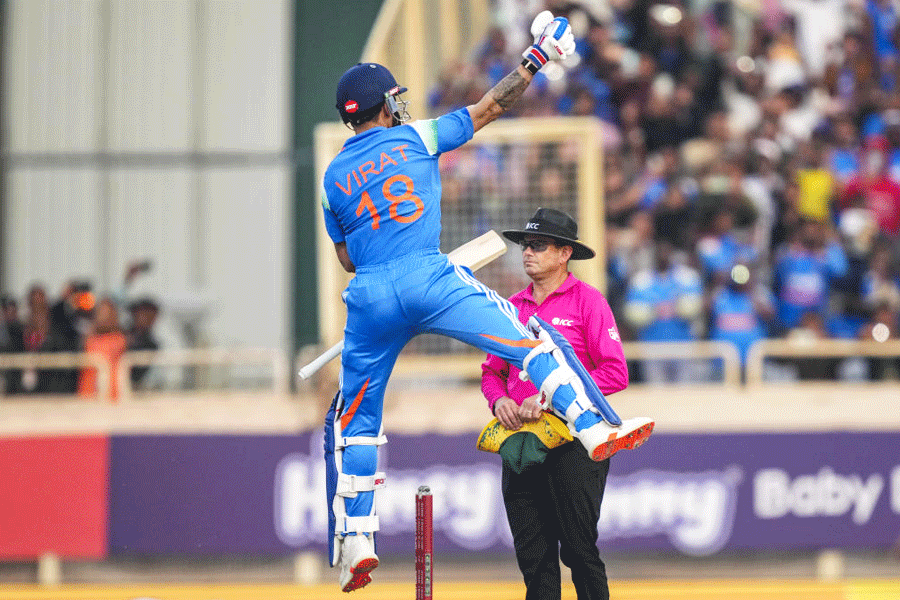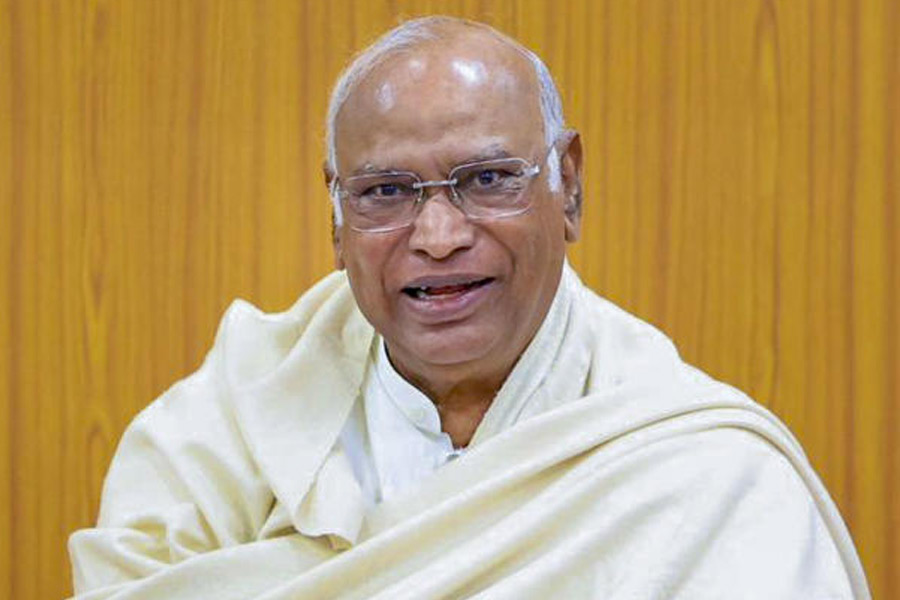The hallmark of Gautam Gambhir’s tenure as India’s coach has been tail-insurance, or the deployment of batters as faux bowlers to shore up the team’s lower-order. This is starkly obvious because of the contrast with, say, the Ravi Shastri-Virat Kohli era where the manager and captain were determined to play five bowlers even though India’s frontline seamers were all natural number elevens.
You can argue that this is unfair because India in the last series in England (with Gambhir at the helm) played the Edgbaston Test with six bowlers: Ravindra Jadeja, Washington Sundar and Nitish Kumar Reddy plus three frontline seamers. The problem with this example is that in English conditions, Sundar and Reddy are surplus to requirements; Sundar because there isn’t enough in English pitches for one finger spinner, forget two, and Reddy because he isn’t really a bowler.
Don’t take my word for it; his captain, Shubman Gill, didn’t bowl Reddy at all in the just-completed second Test against the West Indies even though Gill made the opposition follow on, which meant his bowlers had to bowl two hundred overs without a batting break. In all this time, Reddy didn’t turn his arm over once. He was flying under false colours: a batter shoe-horned into the team as an all-rounder.
Ajit Agarkar, the chief selector, and Gambhir (henceforth AAGG) have let it be known that they see in Reddy an all-rounder in the making, that his selection in Australia, England and now in India is all part of this process of nurturing a rare talent. I’m predisposed to like Reddy: I was at the MCG when he scored a century at a difficult time in a losing cause in January. If India’s selectors go back to playing five specialist batters in their Test sides, he should be in the mix fighting it out with Sarfaraz Khan, Shreyas Iyer and Sai Sudharsan for that place in the middle order. As a seam-bowling all-rounder though, he has less to offer India’s bowling attack than Eknath Solkar did in the bad old days.
In the late 1960s, India’s Test selectors embraced the faux all-rounder to make up for an acute shortage of specialist seam bowlers. I grew up with this style of player: Eknath Solkar, Abid Ali, Madan Lal, Karsan Ghavri, even, at the very start of his career, Mohinder Amarnath. Amarnath was picked against Australia in Madras in 1969 as a medium pacer who could bat a bit and actually took two wickets on debut.
These bowlers wouldn’t have stood a chance of making the Test XI of any other side in the world at the time as seamers because they were slow and not particularly penetrative. The only international batter who had cause to fear Solkar was Geoff Boycott who was done by him a few times. Abid Ali was routinely (and accurately) described as military medium. There was an inverse relationship between the height of Madan Lal’s delivery leap and the speed of his delivery. Ghavri’s bumper was quicker than his stock ball and his tally of Test wickets (over a hundred) owed something to his other bowling style, left arm slows bowled with a whippy action.
The standard definition of an all-rounder is a player who averages fewer runs per wicket than he scores per innings. None of these players meets this definition. ‘All-rounder’ was a courtesy title but contemporaries recognised the need for another term so Solkar and company were generally described as utility men. Utility men were players who made useful but auxiliary contributions to the team’s performance. They were unlikely to turn a match for the team with the bat or the ball but they could eke out the team’s performance by playing supporting roles. (The one skill in which the utility men outshone their specialist betters was fielding. Solkar, Abid Ali and Madan Lal were athletic fielders at a time when Indians generally weren’t.)
Specialist seam bowlers didn’t really exist in the long drought between the end of Ramakant Desai’s career and Kapil Dev’s debut. Or perhaps India’s selectors put on their Orientalist hats and decided that the natural endowment of Indians made the search for good seam bowlers a waste of time and took the pragmatic decision to balance the Test side with bits-and-pieces players. Utility men took the shine off the new ball for the spinners, took bonus wickets in seam-friendly conditions, and allowed the spinners brief respites by bowling on an average under twenty per cent of the total overs bowled per innings.
Crucially, they extended India’s low-order batting because the spearhead of India’s bowling attack, its trio of spinners, couldn’t bat at all. So even though this quartet of utility men averaged 25 and below with the bat, their modest scores were vital given that Bishan Singh Bedi, B.S. Chandrasekhar and E.A.S. Prasanna averaged under 9, 5 and 12, respectively. Chandrasekhar famously had more wickets than runs in his long Test career.
Desis my age become apoplectic when a genius spinner like R. Ashwin is replaced overseas by a journeyman like Shardul Thakur. They think at once of Bedi being replaced by Solkar on tour which never happened because Bedi was a better wicket-taking bowler than Solkar on every kind of pitch, in all sorts of weather. My cohort was raised on Indian spinners taking wickets everywhere partly because they had to — utility men were shine removers, not proper bowlers — and partly because pitches abroad, in England, Australia and the West Indies to name the most difficult tours then, had more purchase for spinners than their modern avatars do.
The utility men of yore were fine cricketers but they were answers to scarcity, creatures of drought. At a time when Indian cricket is flush with money, when it has created over the last forty years a lineage of fast-bowling role models, it is galling to have batters like Reddy or a trundler like Shardul Thakur inserted into the team at the expense of specialist fast bowlers.
It should surprise no one that India’s undermanned seam attack has led to injuries. Jasprit Bumrah was bowled into the ground in Australia thanks to Gambhir’s refusal to play a proper fourth seamer. This meant that Mohammed Siraj had to carry the attack over five Tests in England, and it is a miracle that he hasn’t broken down. (AAGG’s tone-deaf handling of Mohammed Shami, returning from injury, hasn’t inspired confidence either.)
For all his thin-skinned nationalism, Gambir is a timorous, risk-averse manager, determined to stuff his team with batters. Ironically, his anxiety about India’s batting is created by his propensity for selecting just four specialist batters with Rishabh Pant batting at number five. It doesn’t help India’s batting cause that giants of the first-class game like Shreyas Iyer and Sarfaraz Khan are arbitrarily discarded in favour of players with thinner resumés like Sai Sudharsan and Reddy who are then given a run of games that less indulged players can only dream of.
Desi fans must hope that India’s selectors and its manager revert to the Shastri-Kohli template that put its faith in specialist batters and bowlers instead of this eccentric style that plays batters for their bowling (Reddy) and bowlers for their batting (Sundar). It isn’t just specialist seamers that have been victims of this policy; Kuldeep Yadav has been criminally underused because he can’t bat as well as Sundar can.
Memo to AAGG: real all-rounders are vanishingly rare; Test cricket is a specialist business.
mukulkesavan@hotmail.com











